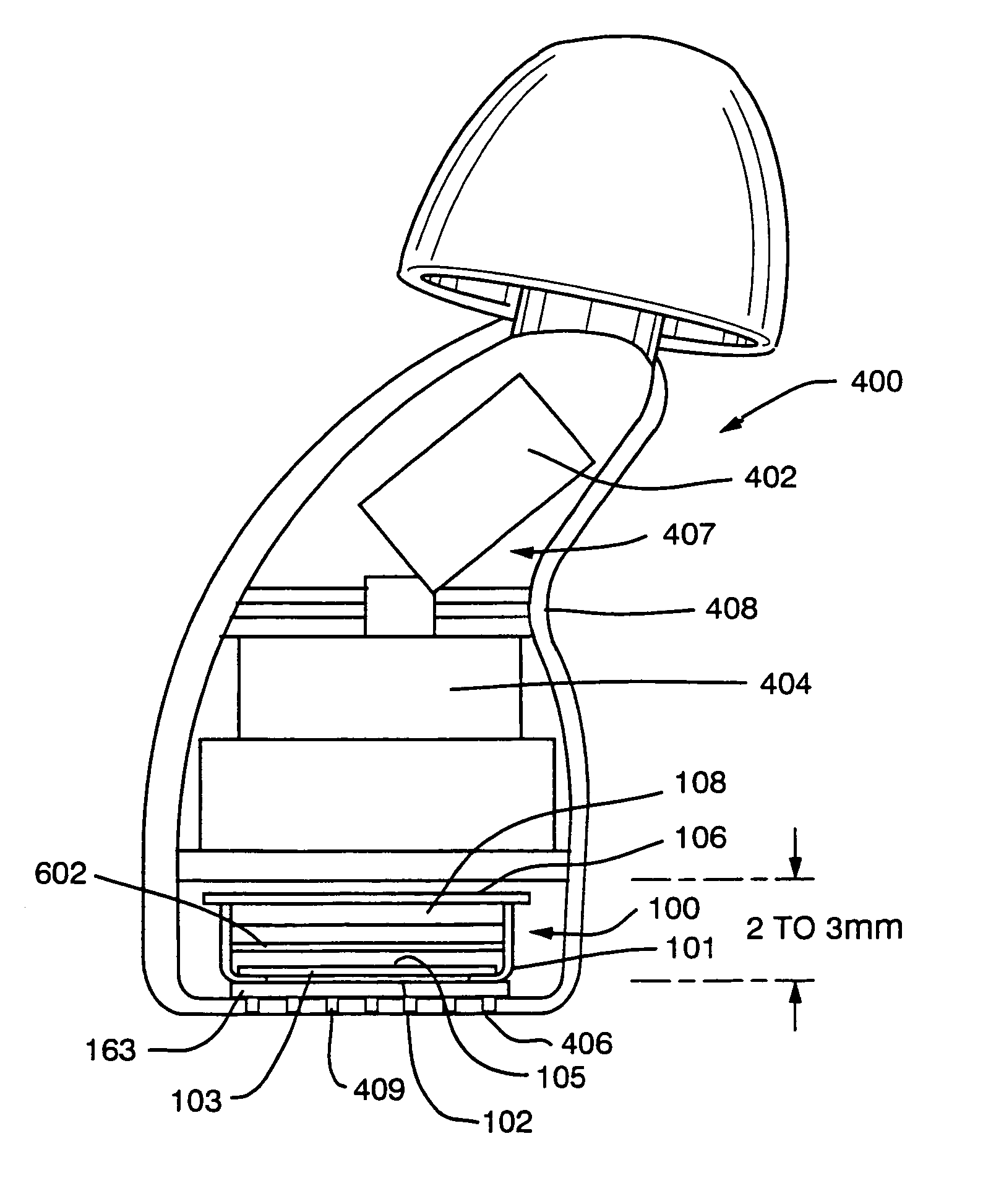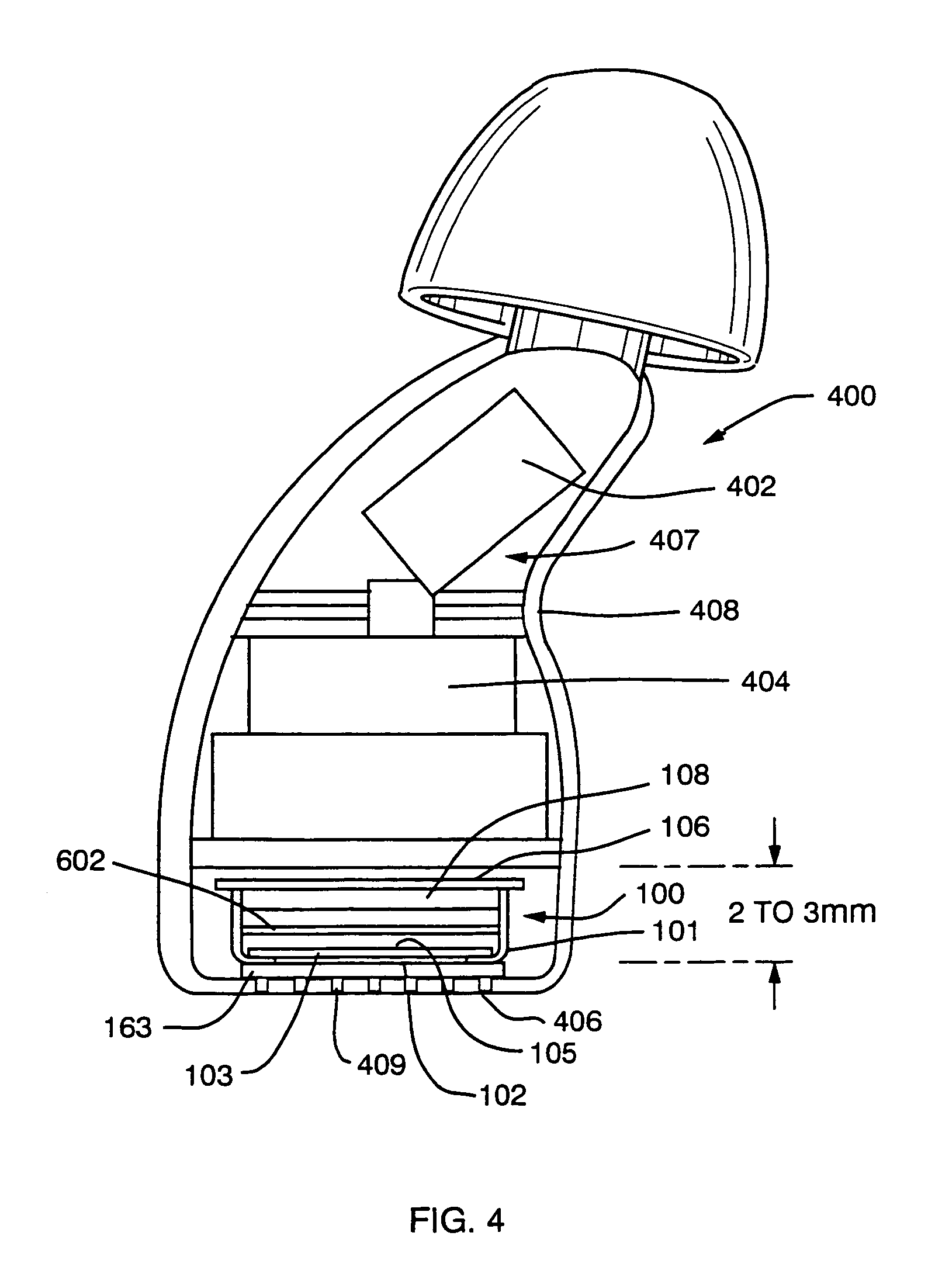Hearing aid with large diaphragm microphone element including a printed circuit board
- Summary
- Abstract
- Description
- Claims
- Application Information
AI Technical Summary
Benefits of technology
Problems solved by technology
Method used
Image
Examples
Embodiment Construction
[0055]FIG. 1 shows a first embodiment of the invention illustrated pictorially in a cross sectional view of a hearing aid microphone assembly 100. A metal housing 101 adapted to be disposed inside an enclosure such as the enclosure 408 shown in FIG. 4; with sound inlets 102 contains, inter alia, front chamber 104, a diaphragm 103, a backplate 105, a back chamber 108, and electrical components 109. In addition, a printed circuit board 106 on which the components are mounted, and an electrical connection 107 is included in the housing 101, thereby providing all the electrical components (except the battery and a receiver) required for a hearing aid. The diaphragm 103 consists of a sheet of a thin flexible material (e.g., metallized mylar) that is stretched tight and glued to a support element 501. As shown in FIGS. 5 and 6, the support element 501 may take many shapes. In the FIGS. 5 and 6 embodiments, a separate spacer is inserted between the diaphragm (with its support element) and ...
PUM
 Login to View More
Login to View More Abstract
Description
Claims
Application Information
 Login to View More
Login to View More - R&D
- Intellectual Property
- Life Sciences
- Materials
- Tech Scout
- Unparalleled Data Quality
- Higher Quality Content
- 60% Fewer Hallucinations
Browse by: Latest US Patents, China's latest patents, Technical Efficacy Thesaurus, Application Domain, Technology Topic, Popular Technical Reports.
© 2025 PatSnap. All rights reserved.Legal|Privacy policy|Modern Slavery Act Transparency Statement|Sitemap|About US| Contact US: help@patsnap.com



